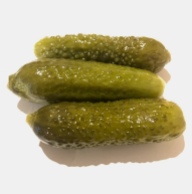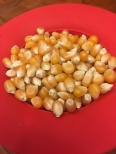I have been away from my blog for a long time. We have been doing a lot of traveling, grandchild visiting and not much cooking, but frankly, I had run out of new things to write about – especially recipes. However, on our most recent visit, Sarah introduced us to a condiment that I had never knowingly tried. It is a secret ingredient at Rich Table and RT Rotisserie, although it appears in the Rich Table cookbook. Sarah calls it shiro dashi vinaigrette, and she makes enough at one time to keep in the refrigerator to season salads, noodles, and whatever needs some added flavor. Shiro dashi adds the umami that the Japanese are so good at incorporating into their foods. Shiro dashi is actually a concentrated soup and sauce base. It may be available in your local large grocery stores, especially those with a section for Asian foods. In our vicinity we are fortunate to have Asian, Japanese, Korean, Thai, Persian, Chinese, etc. supermarkets, so it is easy to find unusual ingredients. I found a bottle at the Korean market. The recipe for the vinaigrette is simple, so I have followed Sarah’s lead and keep a jar made up and in the refrigerator.
Now, on to tuna and egg salad. Who needs a recipe for that? I have made it for years beginning when I was a teenage short-order cook. The version at that café was homogenized so finely that it looked like – well, let’s just say it was not appetizing. BUT it kept well for a week on the shelf in the walk-in. To my way of thinking, in a well-prepared tuna salad the canned tuna should be in identifiable chunks as should the egg. (Fresh tuna salad is another story with its own guidelines for preparation.) There also must be chopped celery and scallions – again, identifiable. Then there needs to be something sour. I like chopped salad olives because the pimentos add color, but chopped dill pickles or capers also work. If you have other favorites, add them. Some folks add chopped nuts and/or apples. I am not a fan of those, but if you like them, add them, or whatever else pleases your taste.
Finally, there is the choice of dressing. The standard is bottled mayonnaise, but usually there is way too much, and before long it turns soupy. Homemade mayonnaise is delicious, but too much trouble for the little amount that you use. I prefer just enough French vinaigrette to moisten the mix. It brings great flavor and is light. That made it easy to take the next step and give shiro dashi vinaigrette a try. I am glad. In the future, I won’t use anything else.
You can complete things with a sandwich: your best bread, a leaf of crisp lettuce, a slice or two of fresh tomato, and some avocado. If you decide to go full steam, moisten the bread with shiro dashi vinaigrette instead of butter or mayonnaise. The perfect lunch.
RECIPES
Shiro Dashi Vinaigrette
Ingredients
- ½ cup freshly squeezed lemon juice (2 large lemons should work)
- 1/3 cup extra virgin olive oil
- 1½ tablespoons shiro dashi
- 1 tablespoon finely chopped shallot
- salt to taste
Method
- Put all the ingredients in a quart Mason jar. Cover tightly and shake vigorously until will mixed.
- Use as you would vinaigrette. Refrigerate leftovers for up to 1 week. Use on any dish that would benefit from some flavor – salads, soups, cooked vegetables, etc.
Shiro Dashi Tuna and Egg Salad
Ingredients
- 1 can tuna (7 ounces), well drained
- 3 hard-boiled eggs, chopped coarsely
- 3 scallions, green part included, sliced finely
- 1 stalk celery, chopped into 1/8-1/4 inch pieces
- 3 small dilll pickles, chopped
- 3 to 6 generous tablespoons shiro dashi vinaigrette, according to taste
- salt and pepper
Method
- In a medium bowl, mash together the tuna and eggs, using a table fork, until they are well broken up but still recognizable. Gently stir in the sliced scallions, chopped celery, and chopped pickles.
- Add shiro dashi just to moisten the mixture and according to your taste.
- Adjust salt and pepper to taste. Serve.





























































